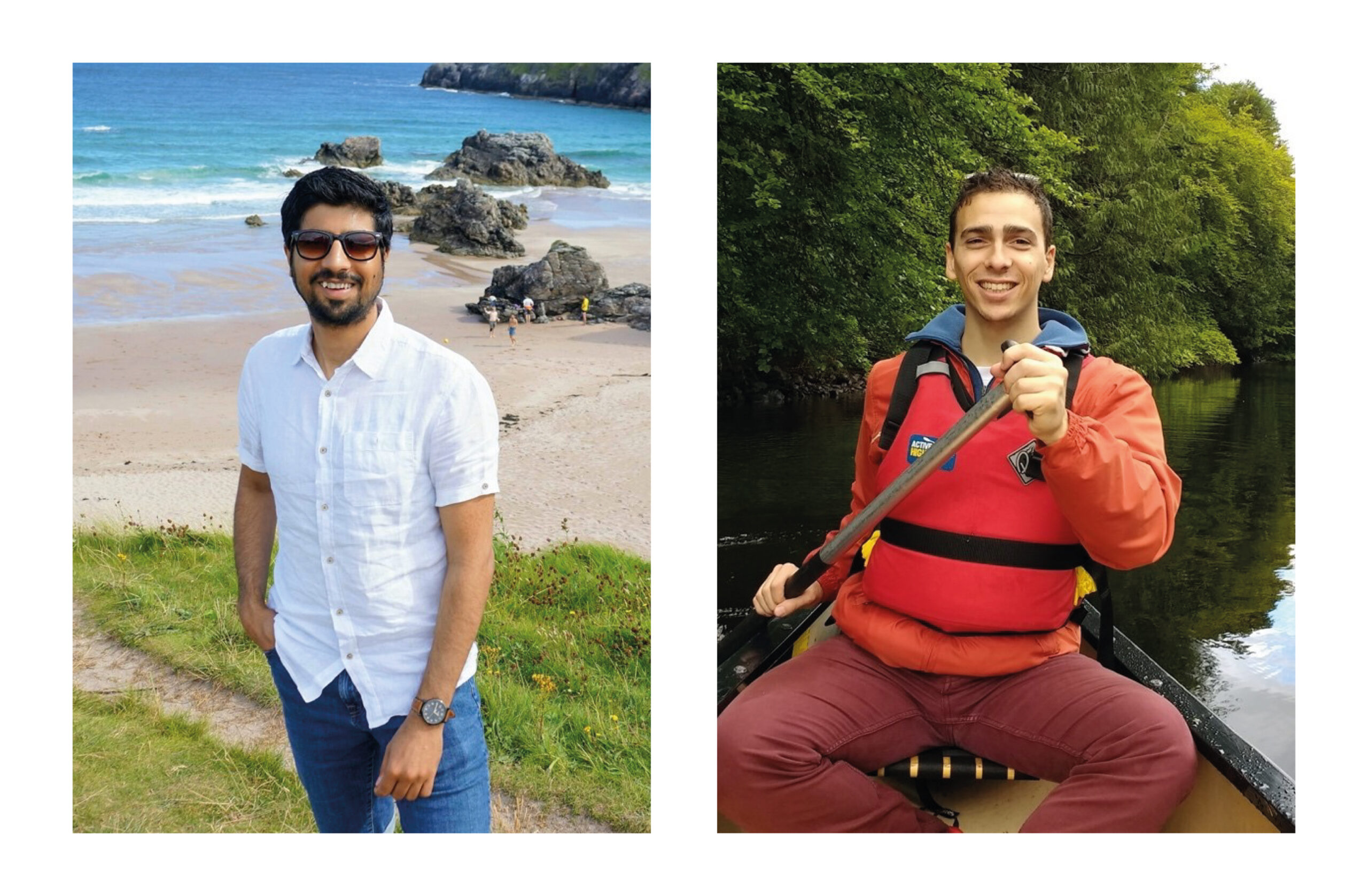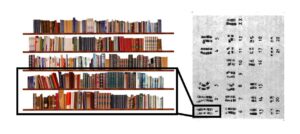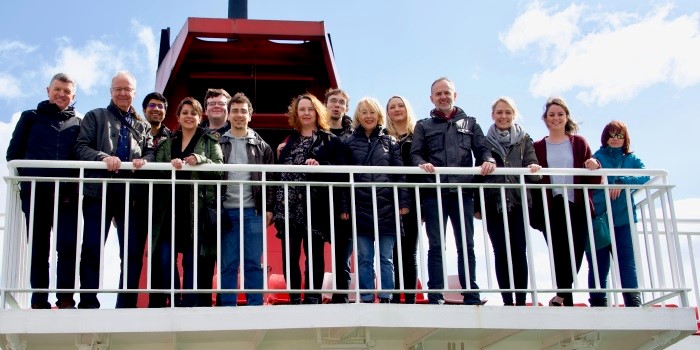What’s it really like being a scientist?

They say you should write about what you know. Asked to interview a scientist, I selected my two former supervisors. Raphaël Pantier, an experimentalist in the “wet lab” and Kashyap Chhatbar, a bioinformatician in the computational “dry lab”. I chose to interview them together because I wanted to capture the energy and enthusiasm of their working relationship, and they certainly deliver. Their latest publication in Molecular Cell reveals new ideas in the field of gene regulation, and illustrates the output of their collaborative approach.
Is being a scientist what you expected?
I began by asking if their experience of research has matched their expectations. The answer, from both, is a firm no.
Raphaël is honest about his frustration with repetitive tasks. “I thought it would all be robots and ultra-modern”, he explains, “it’s very boring to do the same protocols many times”. I explain that this might not be the upbeat message that readers want to hear, but he hasn’t finished. “What I like about biology is action and demonstration. You want to see if something is important, so you mutate it and see what happens.” The hundreds and hundreds of sample tubes and protocols might seem overwhelming, “but when you think about what is happening in the tubes, it’s great!’
Raphaël continues. “I really like the collaborative part, and I didn’t expect it would be like that. Research involves a lot of people and this is probably not advertised so much to the general public.” Biology is complex and research demands a range of technical skills to answer very essential questions. “Lots of scientific papers now have 1, 2, 3 co first-authors … it’s not that these experiments need three people [to physically do the amount of work], but the range of skills required cannot be in one person’s brain or hands.”
Kashyap had similar expectations of the solitary research experience. “When I was learning to be a bioinformatician, it was more that you develop the tools and [other] people use them. However, that didn’t turn out to be true.” As genetics research continues to generate huge amounts of genetic data, bioinformaticians like Kashyap have become more integrated into the day-to-day process of biological research. “You understand the biological problem once you are collaborating. You end up needing to develop a tool or tweak a tool to answer a particular problem, to refine the research – it is much more exciting.”
But how do you establish those collaborations in a system that rewards individual performance? The Nobel Prize, for example, is awarded to a select few individuals, and prestigious jobs are often highly competitive. “It’s true that being friends helps in general…” explains Raphaël, continuing: “it’s more mutual trust, let’s say. I think he is very competent in what he is doing and I trust what he is doing, and if I have any criticism, I would not hesitate to tell him.” It is an honesty and a respect common to all good partnerships.
So, what research problem has this partnership been addressing? It’s something pretty fundamental.
What are you researching at the moment?
“We have known for a long time that the genome is divided into distinct compartments,” explains Raphaël. In the 1970s and 80s, fuzzy images of the human genome showed that some patches stained differently from others. Researchers at the Human Genetics Unit in Edinburgh (including the current director, Professor Wendy Bickmore) showed that the genome looked something like a row of books on a shelf, some with darker spines that others.

The Bookcase Analogy, using a metaphase spread from a publication by Dr Marina Seabright (1971). Note the dark and light bands.
With the advent of sequencing technologies in the 1990s, it has become possible to access the information inside. It was like moving from the view of a bookcase full of books, to being able to read the words in the books themselves. Just as we use the 26 letters in our alphabet to convey meaning, or computers using combinations of 1s and 0s to perform their tasks, living things using their own code of A, T, C and G to store information in and interpret information from the genome. The pace of research has been impressive, and we are understanding how passages in those books have the information to make all the things that our bodies need to function. But the organisation into books? “We fundamentally don’t understand why the genome is segmented,” explains Raphaël, “but this has been conserved through evolution so we believe it must be important.”
With the ability to read the genome, scientists noticed that Gs, Cs, As and Ts are not written everywhere in an equal way. In fact, one way of distinguishing books from one another is that some are written with lots of As and Ts, whilst others are written using lots of Cs and Gs. Sometimes it is very non-random. Raphaël and Kashyap are members of Professor Sir Adrian Bird’s lab at the Wellcome Centre for Cell Biology. For the last 30 years, Professor Bird has led a team interested in very small stretches of sequence in the genome made up almost entirely of Cs and Gs, called CpG islands. These sequences have been shown to influence how genes near to them are switched on and off, as the G/C sequence is recognised by specific control factors. This new research question explores whether small differences in the number of As and Ts in different ‘books’ could also be important for controlling when and where the genes inside get read.

Professor Sir Adrian Bird (second from left) and his team in pre-COVID, windier times.
How have you approached this research problem?
An instinctive approach when looking at a pattern would be to ask ‘Why would these differences occur?’ ‘Why would there be regions with different amounts of As and Ts?’ Raphaël and Kashyap explain that we often need to approach biological questions the other way around. If we can work out exactly what is going on, (how molecules might be discriminating between these different compartments, how they might be controlling the groups of genes that go on and off as a result), we might then be one step closer to working out why this organisation could matter, and why it might have evolved to be this way.
The Sall4 project began around 2016, led by Professor Bird and Timo (a former lab member, and a co-first-author on the current paper). Adrian and Timo speculated that they could find a molecule in cells that could discriminate between different segments in the genome. Timo searched through a very large number of molecules that could bind As and Ts, and found a molecule called Sall4 that was able to bind to all sorts of combinations of As and Ts. It was already known from other scientific research that Sall4 is essential for embryos to survive and develop. This is partly due to its role as part of a ‘repressor’, able to turn genes ‘off’.
During the development of embryos, many genes need to be turned on and turned off in different cells to make them become different cell types, be they kidney cells or eye cells. The researchers found that Sall4 seemed to particularly turn off genes in the “books” with lots of As and Ts, less so elsewhere. In fact, the more As and Ts in a “book”, the more likely Sall4 was to turn the genes inside it off. Here was a mechanism to explain how different regions of the genome could be discriminated: this Sall4 molecule could link the number of As and Ts, to an effect on quite a large number of genes, and a lot of these genes seemed to be important at a similar time in development. Perhaps Sall4 could co-ordinate turning-off lots of genes at critical stages?
As Kashyap and Raphaël talk through the history of this project it is clear that no-one is more questioning of their findings than the authors themselves. The first time Kashyap noticed that Sall4 was particularly ‘turning off’ genes in proportion to the number of As and Ts in the local area, he described it as a “sceptical moment”. Whilst there was excitement in the lab, Raphaël is also keen to stress that: “excitement is good, but you need to be cautious.”
Cautious Excitement
Having had the privilege to work with these two scientists, I recognise in their description their caution about every decision… Raphaël explains: “When you use a classical tool for gene expression analysis, there are hundreds of papers showing exactly the same kind of approach so you can compare yourself to others. Here, Kashyap is analysing the dataset in a very particular way by distinguishing genes in categories [of how many As and Ts they have in and around them], and so on. We didn’t know if we were introducing any bias that is not related to the biology of Sall4.”
Kashyap explains how they tested these concerns: “I went on to scrutinise [this effect] by looking at possible biases, whether it could be introduced by any sequencing artefacts or a normalisation issue, and all that sort of thing, and it still stood and it still stood… I was getting slightly more confident with it. Then we saw early indications of a mutant version of Sall4 that didn’t have that effect, Raphaël did that.” The team found that, when they damaged the Sall4 molecule, they didn’t see the ‘turning off’ effect on the A/T-region genes anymore.
I ask whether there were any particular moments that made them confident in their hypothesis, that Sall4 was repressing genes depending on how many As and Ts happened to be in and around their sequence. Kashyap is quick to answer: “The killer one was the reverse effect.”
Raphaël chimes in: “I was going to say exactly the same actually!”
When they removed the Sall4 molecules, the genes were turned on and when they added back the Sall4 molecules, the genes were quickly turned off. The size of this effect in each direction depended on how many As and Ts were in and around each gene. The changes they saw in one direction could be replicated in the other direction. It seems intuitively simple, but the evidence strongly supported their hypothesis.
Did you answer the question?
Straight to the point, I ask if they now understand why the genome is organised into these different compartments.
Raphaël explains, “We really need to explore more and understand what these compartments are.” That is to say, more research is needed. But he is none-the-less excited about this essential first step: “It’s a different way of seeing gene regulation, I think. What gets me the most excited, it’s one really particular aspect of the paper but it’s really the dose dependent transcriptional effect [that is, the more As and Ts nearby, the more a gene is repressed]. We used to think that regulators just bind [to the genome] and switch genes on or off, and here we see that depending on the density of the As and Ts you get more or less repression.” The researchers are keen to understand exactly how Sall4 is binding to DNA, how on the molecular scale it is physically recognising lots of different sequences made of As and Ts. It is a property not conventionally seen in genetic regulators.
So, what next towards answering their question? The team is now analysing existing data sets to find other molecules that might behave in a similar way. Multiple regulators may be recognising these differences in the distribution of As, Ts, Cs and Gs by a similar mechanism, using this information to read groups of genes together, and these genes may contribute together to biological processes. This may be what makes this organisation into A/T and G/C regions important. They have made a jump forward in answering the ‘what’, and opened far more questions about the ‘why?’.
Who would you interview if you were interviewing a scientist?

A portrait of Galileo ‘being a purely rational person’, from the Wellcome Collection in London.
I have time for one last question, so I put the researchers in my shoes. Who, given the chance, would my interviewees like to interview? And more pertinently, why?
“It’s a really hard question to answer,” says Kashyap, “Right now, I’d like to interview a group who work on supervised principal component analysis, as that’s what I’m currently into now, but that will change. So I’d probably say Oliver Stegle (based at the European Molecular Biology Laboratory in Germany). He has used the hundreds of years of maths that is already out there and applied it effectively for single-cell data. I think the wheel gets reinvented or you just use a wheel in a more inventive way, you tweak the wheel to your specific application. Plus, his papers were well written and the maths was formulated clearly, because I could grasp it!”
Raphaël has other ideas. “I’m going to go for someone who died a long time ago: Galileo. I like the idea that these people were seen as completely crazy people, and the fact that just by observing the sky, and having a power of abstraction, and being a purely rational person, he could come up with the idea that the earth was going around the sun rather than the contrary, knowing that he was right in a time in which everyone was against him.” He thinks about it. “That would be my deep motivation to do science in general, that maybe one day one person will come up with a great idea which is true, which is completely something that no-one would have suspected, just by observing nature and just thinking in a really rational way.”
So what do they admire in these subjects? An ability to think rationally, to have novel ideas, to apply old techniques to “use a wheel in a more inventive way”. In my colleagues I see the value of collaboration, curiosity and healthy scepticism with a commitment to the sometimes ‘boring’ tasks that just occasionally reveal the ‘killer’ result. Scientific research is far more exciting and welcoming than I had imagined it could be, and these researchers capture that exactly.
You can read the latest research from Kashyap, Raphaël and the rest of the “SALL4 Team” in Molecular Cell this week:



